Double Cone Blender Used in Different Industries
Mixing is one of the most common operation been used in different industries like pharmaceutical, food, chemical, cosmetic, detergent, fertilizers etc. This is been done in order to produce uniform bulk mixture as each unit contains the same proportion of each ingredient. And hence, double cone blender is been used for mixing dry powder and granules homogeneously. There are two types of machine been used in industries like double cone blender machine and dry powder mixing cone blender
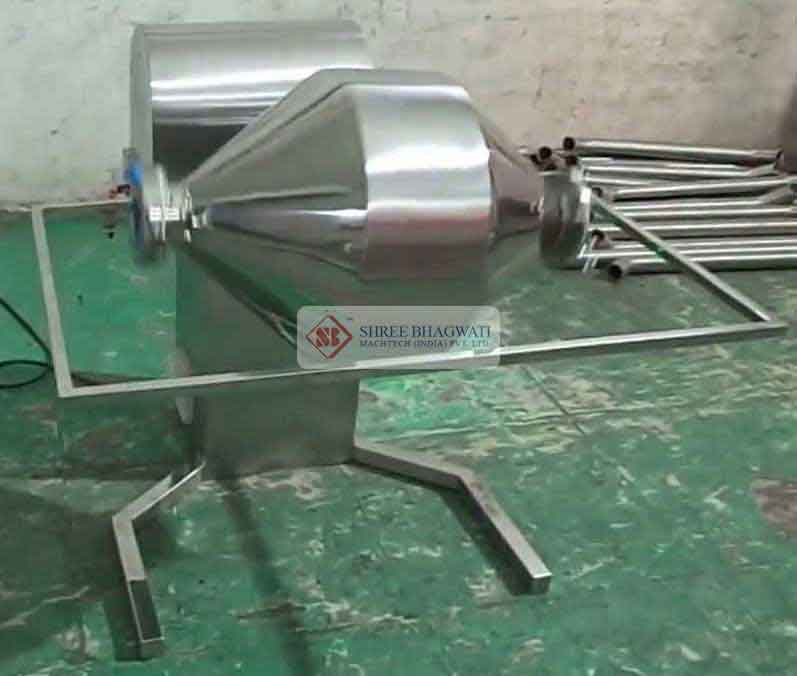
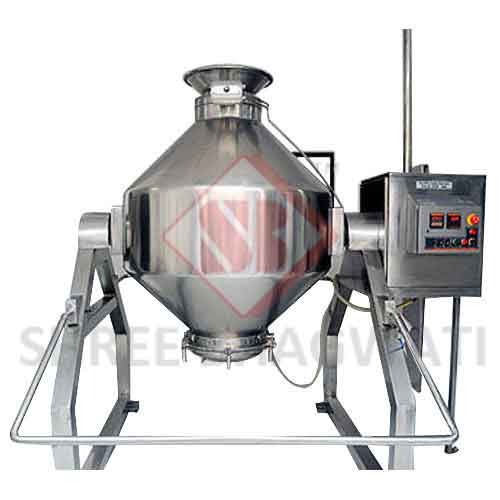

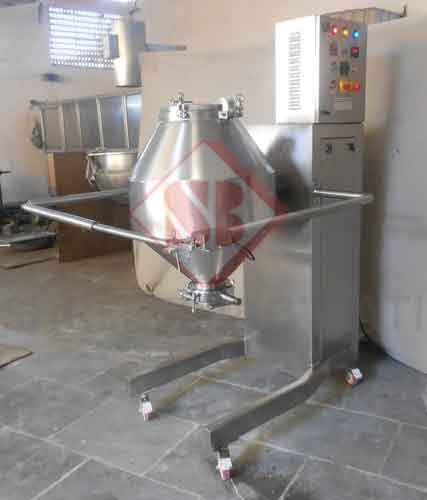
Following shows the application and mechanism of double cone blender machine
- In different industries there are mixing is required for mixing and powder and granules so as to form the product.
- There are two machines that provide effective mixing available that are dry cone blender machine and dry powder mixing cone blender.
- Both the type of machines provides with effective mixing of powder and granules
- The double cone blender machine is of canonical shape at both ends that provide uniform mixing of granules in bulk and easy discharge
- The powder and the other components are been loaded into the cone for mixing
- In order to ensure proper mixing two third of the cone blender is been filled
- The cone of the double cone blender machine is been balanced statistically to avoid excessive load on the mixture.
- Once the product is been loaded into the cone for mixing, the paddle type baffles accordingly for better and uniform mixing inside the cone.
- The normal cycle time of rotating the cone ranges near 10 minutes and may vary depending upon the difficulty in mixing
- After finishing with the mixing, the mixture been produced is been discharged with the help of side valve
- Due to the polished surface of the double cone blender machine, you can easily clean it manually
- Similarly, the dry powder mixing cone blender is used for mixing of dry powder and granules homogeneously.
- There are various industries using dry cone blender machine that includes pharmaceutical, food, chemical, cosmetics, detergents, fertilizers, plastics etc.
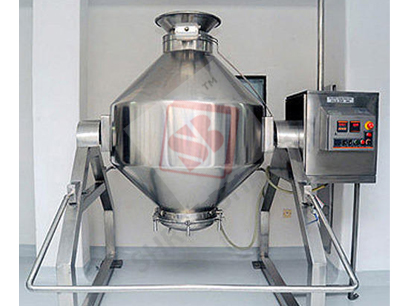
Applications of Double Cone Blender Machine
- In the chemical industry, it is been used in the mixing of chemicals, dry powdered detergents, glass or ceramic, fertilizer etc.
- Different ingredients are been used in the pharmaceutical industry. In order to mix the ingredients dry powder mixing cone blender is been used.
- More often for dry blending of free-flowing solids dry powder mixing cone blender is used in the food industry. It is used in the preparation of spices, flavors, cake mix, and other solid ingredients
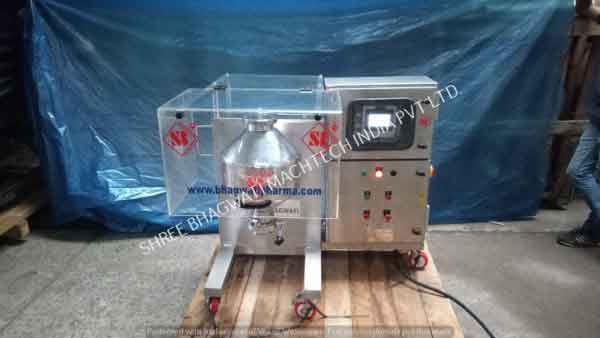
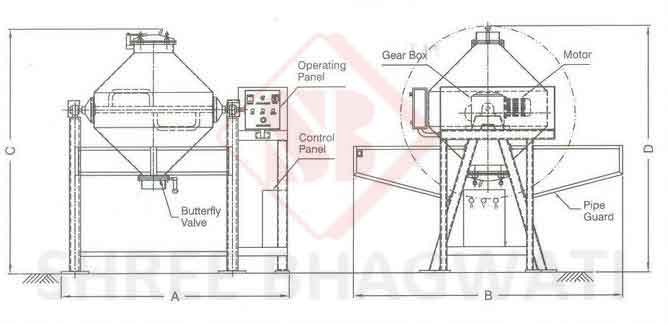
Bhagwati Pharma is a leading manufacturer and exporter of dry cone blender machine and dry powder mixing cone blender for mixing of powder and granules. Our machines are used in different industries like pharmaceutical, food, chemical etc. Our machines are designed in such a way to avoid dust generated from double cone blender. We also offer with different types of machinery used in industries that include washing machinery, powder filling machinery, liquid filling machines, capping machine, labeling machine, tablet press machine, and many other machineries. For more information contact us today and know about the different machineries been used in the industries.
The science behind Double Cone Blenders
The science behind Double Cone Blenders revolves around the principles of bulk movement and diffusion to achieve uniform mixing. These blenders consist of a conical vessel with two conical ends, rotating on a horizontal axis, which allows the blending of materials with a gentle, tumbling action.
Bulk Movement: As the double cone rotates, the gravity-induced rolling and sliding of the material within the vessel leads to a bulk movement. This action is responsible for the macro mixing of the ingredients. The shape of the vessel ensures that material continuously cascades over itself, providing an efficient and balanced mix.
Diffusion: On a micro-level, diffusion plays a role as particles of different sizes and densities move randomly throughout the mixing mass. Over time, this random movement results in a homogenous mix, eliminating concentration gradients within the batch.
Shear: Double Cone Blenders typically create a low-shear environment which is ideal for mixing fragile or sensitive materials that might degrade under high-shear conditions. The gentle folding action minimizes particle degradation and is thus preferred for applications where maintaining particle integrity is crucial.
Impact of Fill Level: The fill level of the blender affects the mixing efficiency. Ideally, the blender should be filled between 30% to 70% of its total volume. Underfilling may lead to insufficient material interaction, while overfilling can restrict movement, both leading to poor mixing.
Effects of Particle Size and Density: The mixing mechanism is also influenced by the particle size and density of the materials. While the blender is capable of handling a wide range of particle sizes and densities, extreme differences can lead to segregation, where lighter or smaller particles may concentrate in certain areas of the mix.
Understanding these mechanisms is crucial for optimizing the blending process, selecting appropriate materials, and achieving the desired product quality. Operators must consider these factors when choosing a Double Cone Blender for their application to ensure efficient and effective mixing.
Tips for Proper Maintenance of Double Cone Blenders
Proper maintenance of Double Cone Blenders is essential to ensure consistent performance and longevity of the equipment. Here are some tips for keeping your blender in top condition:
-
Schedule Regular Inspections: Conduct routine checks to identify any wear and tear, especially on moving parts like bearings and seals. Replace any worn components promptly to avoid unexpected breakdowns.
-
Clean After Each Use: Residue can affect the performance of the blender and contaminate future batches. Clean the blender thoroughly after each use, following the manufacturer’s recommendations for cleaning agents and procedures.
-
Lubricate Moving Parts: To prevent friction and overheating, regularly lubricate the blender’s moving parts. Use the appropriate grade of lubricant as specified by the manufacturer.
-
Balance Loads: Always ensure that the materials are evenly distributed within the blender to prevent excessive vibration, which can lead to mechanical failures.
-
Check for Corrosion: If your blender processes corrosive substances, inspect it frequently for signs of corrosion and take corrective measures to protect the equipment.
-
Follow Manufacturer’s Guidelines: Adhere strictly to the maintenance guidelines provided by the manufacturer, including the recommended schedule for servicing and parts replacement.
-
Train Personnel: Ensure that all operators and maintenance staff are properly trained in the use and care of the Double Cone Blender. Informed personnel can better prevent and identify issues.
-
Maintain Documentation: Keep detailed records of all maintenance activities, including inspections, part replacements, and repairs. This documentation can be invaluable for troubleshooting and ensuring compliance with regulatory standards.
-
Test Safety Features: Regularly test the blender’s safety features, such as emergency stops and interlock systems, to ensure they are functioning correctly.
-
Professional Servicing: Schedule professional servicing for complex maintenance tasks or when dealing with intricate blender mechanisms that require specialized knowledge.
Proper maintenance not only minimizes downtime but also ensures the consistency of the mixtures and extends the operational life of the blender.
Double Cone Blender Safety Guidelines: Best Practices for Operator Protection and Product Integrity
When operating a Double Cone Blender, adhering to stringent safety guidelines is paramount for protecting both the operator and the integrity of the product. Operators should always ensure that the safety guards and emergency stops are functional before use and follow lockout/tagout procedures during maintenance. Personal protective equipment such as gloves, earplugs, and goggles are essential to guard against potential hazards like moving parts and dust generation. It’s also crucial to verify that the blender is correctly sealed and the load is balanced to prevent any mechanical strain or product spillage. Regular training on proper operational protocols, coupled with comprehensive knowledge of the machine’s functions, further contributes to a safe working environment and maintains the highest standards of product quality.
















